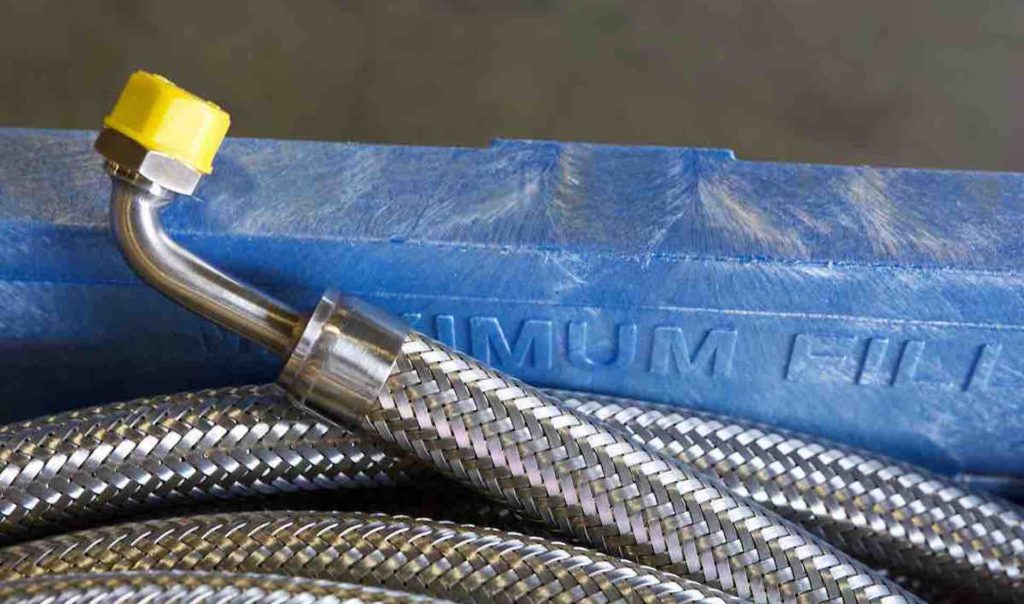Cryogenic Hoses
One of the most exciting and dynamic places to be, cryogenics has already redefined the way we think about energy and medicine, pushed the boundaries on what we can see in space as well as how we get there, and created more efficient processes for food freezing, storage, and transport.
While the shift towards cleaner energies is driving investment in LNG and demand continues to climb for cold chain technologies and services, there remain many opportunities for further growth, namely with advances in superconductivity that could one day revolutionize the power grid.
Piping that efficiently supports the transport and use of cryogens is necessary for a successful operation. With decades of experience designing and manufacturing flexible components for cryogenic applications, we understand the importance of mitigating burn off, using test methods that identify the smallest of leaks, and cleaning in accordance with various specifications.

Alloy Selection
Stainless steel is one of the few materials of construction—and sometimes the only— that can accommodate these low temperatures. In fact, the 300 Series stainless steels, also known as the cryogenic steels, see increased tensile and yield strength when temperatures plummet.
Design Considerations
Penflex offers a range of flexible metal hose and braid products, as well as complete hose assemblies, to accommodate movement and absorb vibration in cryogenic applications.
Understanding the importance of flexibility and movement, we’ve designed our cryogenic hoses with the following characteristics.
- Annular hose design. Annular hoses, where individual corrugations are “stacked” parallel to one another, consistently achieve longer dynamic cycling than helical hoses, where the corrugations are one continuous helix, given that bending happens between the corrugations rather than through them.
- Thin wall. Using thinner metal strip means less force is required to bend the hose. Force to bend is a key indicator of how flexible a hose is.
- Compressed pitch. The greater the number of corrugations, or the higher the corrugation count, the more flexible a hose will be.
- Higher corrugation height. Increasing the height of the corrugations is another way to increase the flexibility of a hose.
Sometimes final assembly designs include interlocked casing or armor near the end fittings to protect the hose from overbending. Overbending often occurs during installation and/or during operation. Uses below a hose’s minimum bend radius will lead to premature failure. Other times, particularly in LNG applications, building a hose inside of another hose enables users to maintain media temperatures within the inner hose through the use of insulation or by pulling a vacuum within the outer hose.
Cleanliness Requirements
The utmost care is taken to prevent matter from settling within hoses during manufacturing and to produce hoses to the highest level of cleanliness.
Helium Mass Spectrometer Testing
With the ability to detect leaks as small as 10-12 cubic centimeters per second, Penflex uses a mass spectrometer with helium tracer gas to leak test our helium transfer hoses. First used to test for leaks in uranium plants as part of the Manhattan Project during WWII, helium mass spectrometer testing is among the most accurate methods of leak detection.
ASME Section IX Welders
Penflex welders are certified to American Society of Mechanical Engineers (ASME) Section IX, the industry’s highest standards. They have undergone rigorous training and years of experience to deliver the superior welds that have become a trademark of our work, meaning our cryogenic hoses are complete with top quality welds.
To print this information, please click here.